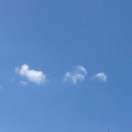CDC DATA ON HIV/AIDS
流水-100567 06/28 7555HIV Among Gay and Bisexual Men
 Gay, bisexual, and other men who have sex with men (MSM) represent approximately 2% of the United States population, yet are the population most severely affected by HIV. In 2010, young gay and bisexual men (aged 13-24 years) accounted for 72% of new HIV infections among all persons aged 13 to 24, and 30% of new infections among all gay and bisexual men. At the end of 2011, an estimated 500,022 (57%) persons living with an HIV diagnosis in the United States were gay and bisexual men, or gay and bisexual men who also inject drugs.
Gay, bisexual, and other men who have sex with men (MSM) represent approximately 2% of the United States population, yet are the population most severely affected by HIV. In 2010, young gay and bisexual men (aged 13-24 years) accounted for 72% of new HIV infections among all persons aged 13 to 24, and 30% of new infections among all gay and bisexual men. At the end of 2011, an estimated 500,022 (57%) persons living with an HIV diagnosis in the United States were gay and bisexual men, or gay and bisexual men who also inject drugs.
The Numbers
New HIV Infections
- In 2010, gay and bisexual men accounted for 63% of estimated new HIV infections in the United States and 78% of infections among all newly infected men. From 2008 to 2010, new HIV infections increased 22% among young (aged 13-24) gay and bisexual men and 12% among gay and bisexual men overall.
- Among all gay and bisexual men, white gay and bisexual men accounted for 11,200 (38%) estimated new HIV infections in 2010. The largest number of new infections among white gay and bisexual men (3,300; 29%) occurred in those aged 25 to 34.
- Among all gay and bisexual men, black/African American gay and bisexual men accounted for 10,600 (36%) estimated new HIV infections in 2010. The largest number of new infections among black/African American gay and bisexual men (4,800; 45%) occurred in those aged 13 to 24. From 2008 to 2010 new infections increased 20% among young black/African American gay and bisexual men aged 13 to 24.
- Among all gay and bisexual men, Hispanic/Latino gay and bisexual men accounted for 6,700 (22%) estimated new HIV infections in 2010. The largest number of new infections among Hispanic/Latino gay and bisexual men (3,300; 39%) occurred in those aged 25 to 34.
HIV and AIDS Diagnosesc
- In 2013, in the United States, gay and bisexual men accounted for 81% (30,689) of the 37,887 estimated HIV diagnoses among all males aged 13 years and older and 65% of the 47,352 estimated diagnoses among all persons receiving an HIV diagnosis that year.
- In 2013, gay and bisexual men accounted for 55% of the estimated number of persons diagnosed with AIDS among all adults and adolescents in the United States. Of the estimated 14,611 gay and bisexual men diagnosed with AIDS, 40% were blacks/African Americans; 32% were whites; and 23% were Hispanics/Latinos.
- By the end of 2011, an estimated 311,087 gay and bisexual men with AIDS had died in the United States since the beginning of the epidemic, representing 47% of all deaths of persons with AIDS.
- In 2011, CDC data showed that 80.6% of MSM with diagnosed HIV infection were linked to care, 57.5% were retained in care, 52.9% were prescribed antiretroviral therapy (ART), and 44.6% had achieved viral suppression.
Estimates of New HIV Infections in the United States for the Most-Affected Subpopulations, 2010

Source: CDC. Estimated HIV incidence among adults and adolescents in the United States, 2007–2010. HIV Surveillance Supplemental Report 2012;17(4). Subpopulations representing 2% or less are not reflected in this chart. Abbreviations: MSM, men who have sex with men; IDU, injection drug user.



